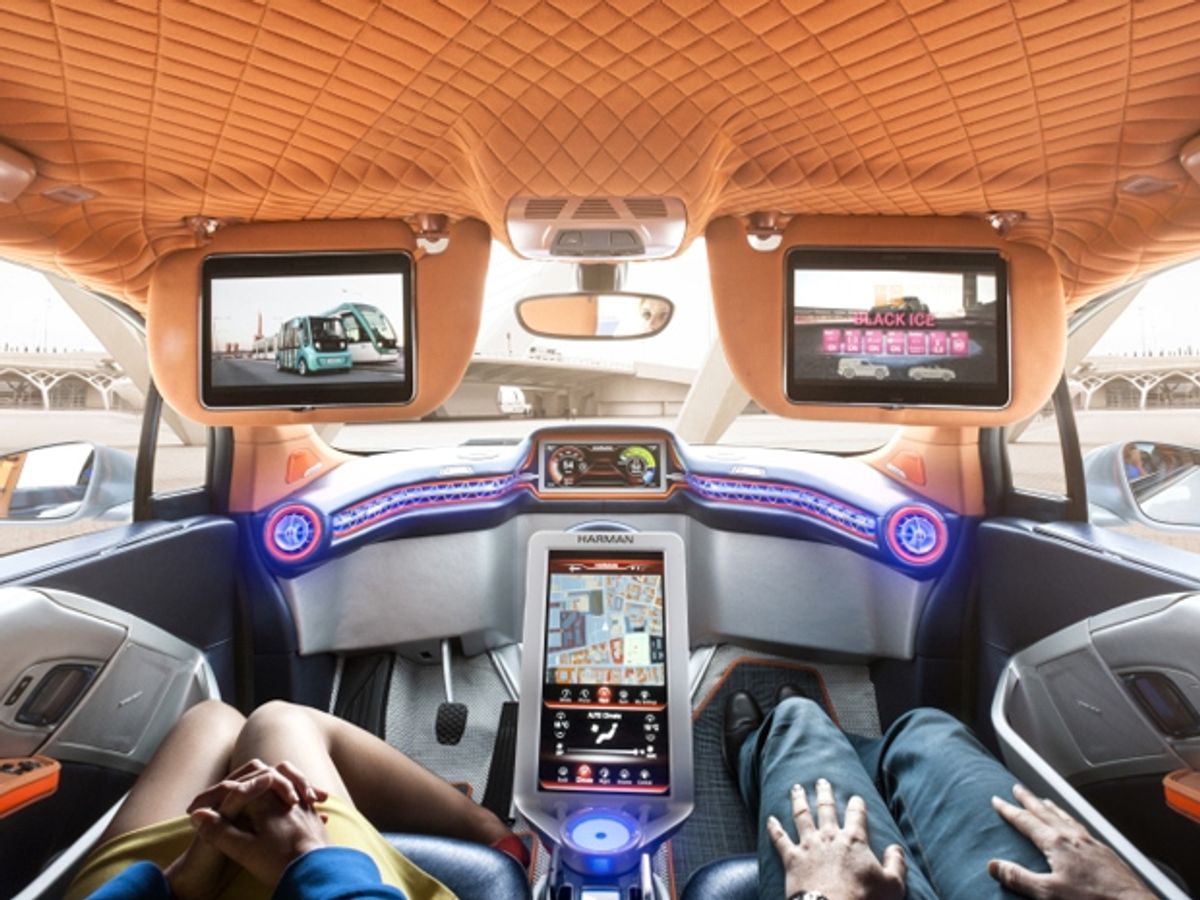Autonomous cars can conjure anxious thoughts of HAL, the runamok computer in “2001: A Space Odyssey” – all-seeing and all-knowing, but neither cuddly nor collaborative.
Rinspeed, Switzerland’s utopian automotive think tank, has a more playful, humanist ideal in mind: the Budii concept. This sexed-up, self-driving take on the electric BMW i3 wants to be your friend on wheels. The Budii is designed not only to drive itself but to learn about itself, its driver and its surroundings and change its behavior accordingly.
A periscope-like laser scanner rises 70 centimeters from the rooftop to map terrain and deliver a 3D view of road surfaces or obstacles, adjusting the adaptive air suspension and ride height to match. Body panels incorporate fiber optics and semi-transparent effects to help the car communicate with pedestrians and other vehicles.
The cabin is just as future-funky. Doors open and close electronically. Folding fan blinds offer privacy for your mobile office. Stowaway plexiglas tables provide work surfaces. Storage compartments feature inductive charging for electronic devices. An elegant new operating and display unit, developed with Harman, learns a driver’s daily habits and preferences and records surroundings and interactions with other cars. It thus eases the job of the human being behind the wheel.
But the coup de grace is the ultra-sensitive, seven-axis robotic arm devised by Germany’s Kuka: It smoothly offers the by-wire steering wheel to either the left- or right-hand occupant. When they’d rather work or send texts, the steering wheel discreetly tucks into a central position to free up space. The robot arm can also become an “attentive personal valet,” a tabletop or a whimsical watch-winder: A high-res cabin camera monitors a watch by Lucerne’s Carl F. Bucherer, with the robotic arm automatically winding the timepiece when it runs low.
“It’s the world’s most intelligent watch-winder, and also the most expensive,” says Rinspeed founder Frank Rinderknecht, with a laugh.
Rinderknecht believes that autonomous freeway driving will become reality by about 2020. Yet as cars steadily become self-reliant, Rinderknecht says, people will need to change as much as their cars, relearning everything they know about the man/machine interface. It’s about developing healthy trust in the machine, he says, but not blind trust.
Although people now tend to quickly excuse a fender bender—to err is human, after all—they may well be less forgiving when the offender is an autonomous car, he says. Accidents will surely be reduced, but some are inevitable, even with machines in charge.
“Where will you put your anger?” Rinderknecht asks. “Will you kick the car? And when your anger cools down, no one will say, well, bits and bytes don’t always correspond, and things happen. There will be a huge outcry over the first autonomous accident, because people will expect 100 percent reliability.”
Lawrence Ulrich is an award-winning auto writer and former chief auto critic at The New York Times and The Detroit Free Press.



